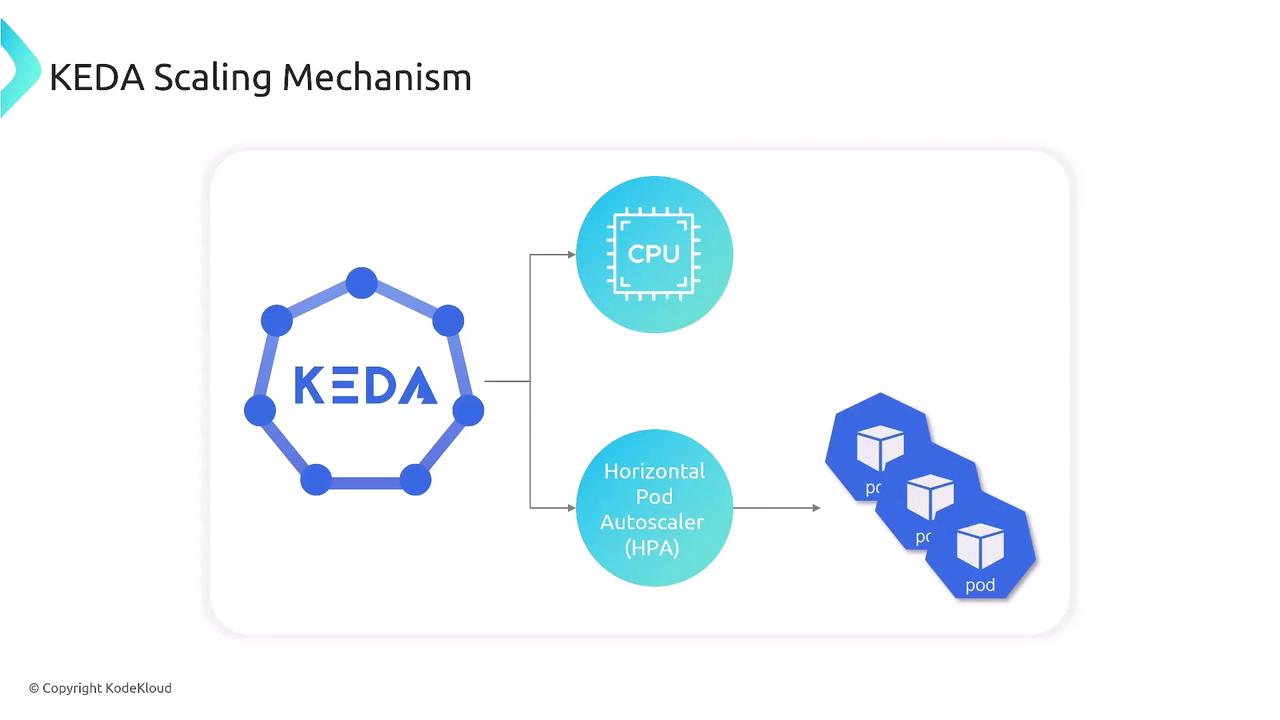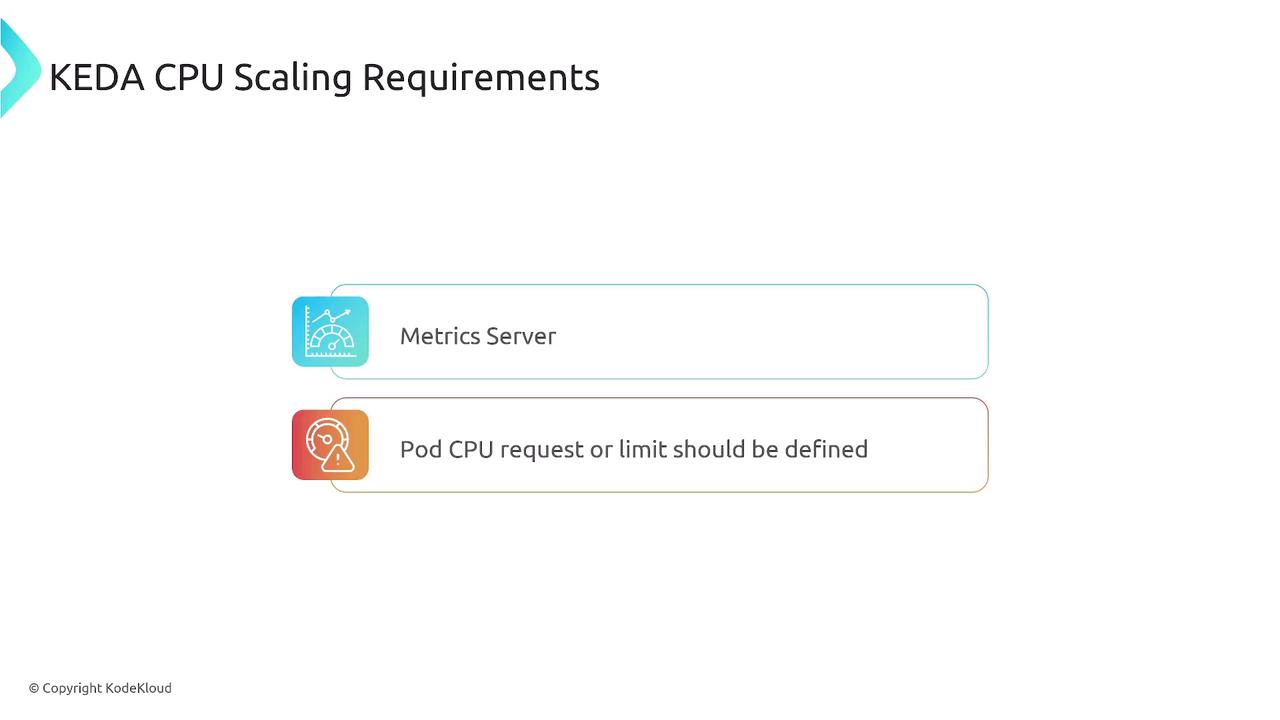Kubernetes Autoscaling
Kubernetes Event Driven Autoscaling KEDA
KEDA CPU Scaling
Welcome to this guide on implementing CPU-based autoscaling in Kubernetes using KEDA and the built-in Horizontal Pod Autoscaler (HPA). You’ll learn how KEDA monitors CPU metrics, sets thresholds, and dynamically adjusts your pod replicas to match workload demands.
How KEDA Leverages CPU Metrics
KEDA integrates with the Kubernetes HPA to fetch CPU metrics and make scaling decisions. The following diagram illustrates the flow:

- Metrics Server exposes CPU usage for each pod.
- HPA retrieves metrics and compares against defined thresholds.
- KEDA’s ScaledObject configures HPA targets and min/max replica counts.
- Pods scale out/in based on real-time CPU usage.
Prerequisites
Before you begin, ensure your cluster meets the following requirements:
- Metrics Server is deployed and operational.
- Pods specify CPU
requests(and optionallylimits) to enable accurate metrics. - Kubernetes v1.27+ or compatible version for HPA and Custom Metrics API.

Defining CPU Requests in Your Deployment
Specify resource requests and limits in your Deployment manifest so the Metrics Server can report CPU usage correctly:
apiVersion: apps/v1
kind: Deployment
metadata:
name: cpu-app
namespace: default
spec:
replicas: 1
selector:
matchLabels:
app: cpu-app
template:
metadata:
labels:
app: cpu-app
spec:
containers:
- name: app
image: images.my-company.example/app:v4
resources:
requests:
cpu: "500m"
memory: "128Mi"
limits:
cpu: "1000m"
memory: "256Mi"
Note
Defining CPU requests ensures the HPA can calculate utilization percentages. If no limits are set, pods can burst beyond the request but HPA will still use the request as the baseline.
Configuring the CPU Trigger in KEDA
KEDA supports two CPU trigger modes:
| Mode | Description |
|---|---|
| Utilization | Percentage of CPU request (e.g., 50 for 50% usage) |
| AverageValue | Absolute CPU value in millicores (e.g., 250m) |
Example trigger configuration:
triggers:
- type: cpu
metadata:
type: Utilization # 'Utilization' or 'AverageValue'
value: "60" # percentage or absolute value
containerName: "" # optional: target specific container
Warning
If your pods include sidecar containers (e.g., logging, service mesh), set containerName to your main application container to avoid scaling based on sidecar CPU usage.
Creating the ScaledObject
A ScaledObject ties your Deployment to KEDA’s scaling logic. Below is a sample manifest that scales cpu-app between 1 and 5 replicas when CPU utilization exceeds 50%:
apiVersion: keda.sh/v1alpha1
kind: ScaledObject
metadata:
name: cpu-app-scaledobject
namespace: default
spec:
scaleTargetRef:
name: cpu-app # must match the Deployment name
minReplicaCount: 1
maxReplicaCount: 5
triggers:
- type: cpu
metadata:
type: Utilization
value: "50" # CPU utilization threshold
Summary of Key Resources
| Resource | Purpose |
|---|---|
| Metrics Server | Exposes CPU/memory metrics to the Metrics API |
| Deployment | Defines pod spec with CPU requests & limits |
| ScaledObject | Configures KEDA triggers and HPA parameters |
| HPA | Executes the scaling logic based on CPU metrics |
References
Watch Video
Watch video content
Practice Lab
Practice lab